
Coney Island is a peninsular neighborhood and entertainment area in the southwestern section of the New York City borough of Brooklyn. The neighborhood is bounded by Brighton Beach to its east, Lower New York Bay to the south and west, and Gravesend to the north and includes the subsection of Sea Gate on its west. More broadly, the Coney Island peninsula consists of Coney Island proper, Brighton Beach, and Manhattan Beach. This was formerly the westernmost of the Outer Barrier islands on the southern shore of Long Island, but in the early 20th century it became a peninsula, connected to the rest of Long Island by land fill.
Murder, Inc. was an organized crime group active from 1929 to 1941 that acted as the enforcement arm of the National Crime Syndicate – a closely connected criminal organization that included the Italian-American Mafia, the Jewish Mob, and other criminal organizations in New York City and elsewhere. Murder, Inc. was composed of Jewish and Italian-American gangsters, and members were mainly recruited from poor and working-class Jewish and Italian neighborhoods in Manhattan and Brooklyn. It was initially headed by Louis "Lepke" Buchalter and later by Albert "Mad Hatter" Anastasia.
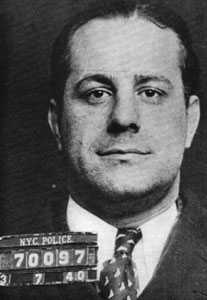
Frank Abbandando, nicknamed "The Dasher", was a New York City contract killer and mobster who committed many murders as part of the infamous Murder, Inc. gang. His preferred killing method was to stab his victims through the heart with an ice pick. After a trial and conviction for murdering a Brooklyn loan shark, he was executed in the electric chair at Sing Sing on February 19, 1942.

Louis Capone was a New York organized crime figure who became a supervisor for Murder, Inc. Louis Capone was not related to Al Capone, the boss of the Chicago Outfit. Capone was convicted of murder in 1941, and sentenced to death. He was electrocuted at Sing Sing Prison on March 4, 1944.
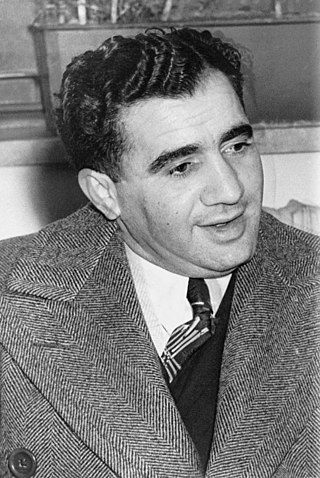
Abraham "Kid Twist" Reles was a New York Jewish mobster who was a hit man for Murder, Inc., the enforcement contractor for Meyer Lansky's National Crime Syndicate.

Gravesend is a neighborhood in the south-central section of the New York City borough of Brooklyn, on the southwestern edge of Long Island in the U.S. state of New York. It is bounded by the Belt Parkway to the south, Bay Parkway to the west, Avenue P to the north, and Ocean Parkway to the east.

Brighton Beach is a neighborhood in the southern portion of the New York City borough of Brooklyn, within the greater Coney Island area along the Atlantic Ocean coastline. Brighton Beach is bounded by Coney Island proper at Ocean Parkway to the west, Manhattan Beach at Corbin Place to the east, Sheepshead Bay at the Belt Parkway to the north, and the Atlantic Ocean to the south along the beach and boardwalk.

South Brooklyn is a historic term for a section of the former City of Brooklyn – now the New York City borough of Brooklyn – encompassing what are now the Boerum Hill, Carroll Gardens, Cobble Hill, Gowanus, Park Slope, Windsor Terrace, Sunset Park and Red Hook neighborhoods. It was named for its location along the waterfront that was the southern border of the original Village of Brooklyn, and has remained widely used as a colloquialism despite it no longer being the southernmost point of the borough. It should not be confused with the geographic southern region of the modern borough of Brooklyn, which includes the neighborhoods of Gravesend, Seagate, Coney Island, Brighton Beach, Manhattan Beach, Sheepshead Bay, Gerritsen Beach, Marine Park, Mill Basin, and Bergen Beach.

Murder, Inc. is a 1960 American gangster film starring Stuart Whitman, May Britt, Henry Morgan and Peter Falk. Filmed in Cinemascope and directed by Burt Balaban and Stuart Rosenberg, the film was based on the true story of Murder, Inc., a Brooklyn gang that operated in the 1930s.

Sea Gate is a private gated community at the far western end of Coney Island at the southwestern tip of the New York City borough of Brooklyn. Located on the portion of the Coney Island peninsula west of West 37th Street, it contains mostly single-family homes, some directly on Gravesend Bay.

Culver Depot, also called Culver Terminal or Culver Plaza, was a railroad and streetcar terminal in Coney Island, Brooklyn, New York City, United States, located on the northern side of Surf Avenue near West 5th Street. It was just north of the boardwalk, near the former Luna Park amusement complex, and across from the current New York Aquarium. Originally built by the Prospect Park and Coney Island Railroad for the Culver surface line, it later became a major terminal for the Brooklyn Rapid Transit Company (BRT).
The Coney Island Velodrome was a mid-sized sports arena in Coney Island, Brooklyn, New York City. Designed as a bicycle racing venue, the drome featured a 1⁄8-mile (0.20 km) wooden oval track with 45° banked corners and seating for 10,000. It also hosted outboard midgets into 1939. Located next to the Culver Depot, the Brooklyn–Manhattan Transit Corporation's rail terminal at Neptune Avenue & West 12th Street, the venue played host to sports ranging from motorcycle races to boxing and football.

NYC Health + Hospitals/South Brooklyn Health is a public teaching hospital located in the Coney Island neighborhood of Brooklyn, New York City. It is owned by NYC Health + Hospitals, a public benefit corporation of the city. The hospital is home to FDNY-EMS Station 43, formerly NYC-EMS Station 31, and is a major clinical affiliate for clinical clerkship with the New York Institute of Technology College of Osteopathic Medicine.
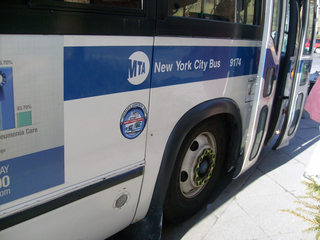
MTA Regional Bus Operations operates local and express buses serving New York City in the United States out of 29 bus depots. These depots are located in all five boroughs of the city, plus one located in nearby Yonkers in Westchester County. 21 of these depots serve MTA New York City Transit (NYCT)'s bus operations, while the remaining eight serve the MTA Bus Company These facilities perform regular maintenance, cleaning, and painting of buses, as well as collection of revenue from bus fareboxes. Several of these depots were once car barns for streetcars, while others were built much later and have only served buses. Employees of the depots are represented by local divisions of the Transport Workers Union of America (TWU), particularly the TWU Local 100 or of the Amalgamated Transit Union (ATU)'s Local's 726 for all depots in Staten Island, 1056 for Casey Stengel, Jamaica, and Queens Village Depots, 1179 for JFK & Far Rockaway Depots, and 1181 for Spring Creek Depot.
The Brooklyn–Queens Greenway is a bicycling and pedestrian path connecting parks and roads in the New York City boroughs of Brooklyn and Queens, connecting Coney Island in the south to Fort Totten in the north, on Long Island Sound. The route connects major sites in the two boroughs, such as the New York Aquarium, Brooklyn Museum, the Brooklyn Botanic Garden, the New York Hall of Science, and Citi Field.
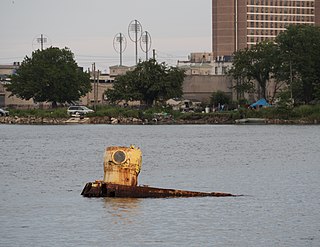
Quester I is the name of a 45-foot (14 m) submarine built in 1967 by Jerry Bianco, a shipyard worker in Brooklyn, New York City. Bianco built the submarine from salvaged metal, with the goal of either raising, or salvaging valuables from, the wreck of the Italian passenger liner SS Andrea Doria, which sank off Nantucket Sound in 1956 after being hit broadside by another liner.

The Elephantine Colossus was a tourist attraction located on Coney Island in Brooklyn, New York City. It was built in the shape of an elephant, an example of novelty architecture. The seven-story structure designed by James V. Lafferty stood above Surf Avenue and West 12th Street from 1885 until 1896, when it burnt down in a fire. During its lifespan, the thirty-one room building acted as a concert hall and amusement bazaar. It was the second of three elephant buildings built by Lafferty, preceded by the extant Lucy the Elephant near Atlantic City and followed by The Light of Asia in Cape May.
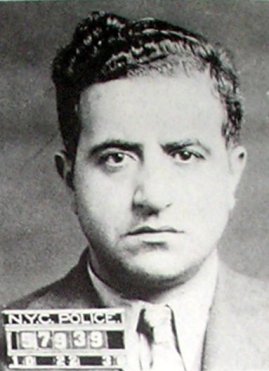
Umberto "Albert" Anastasia was an Italian-American mobster, hitman and crime boss. One of the founders of the modern American Mafia, and a co-founder and later boss of the Murder, Inc. organization, he eventually rose to the position of boss in what became the modern Gambino crime family. He also controlled New York City's waterfront for most of his criminal career, mainly through the dockworker unions. Anastasia was murdered on October 25, 1957, on the orders of Vito Genovese and Carlo Gambino; Gambino subsequently became boss of the family.

Fort George Amusement Park was a trolley park and amusement park that operated in the Washington Heights and Inwood neighborhoods of Upper Manhattan, New York City, in the late 19th and early 20th centuries. It occupied an area between 190th and 192nd Streets east of Amsterdam Avenue, within present-day Highbridge Park.
















